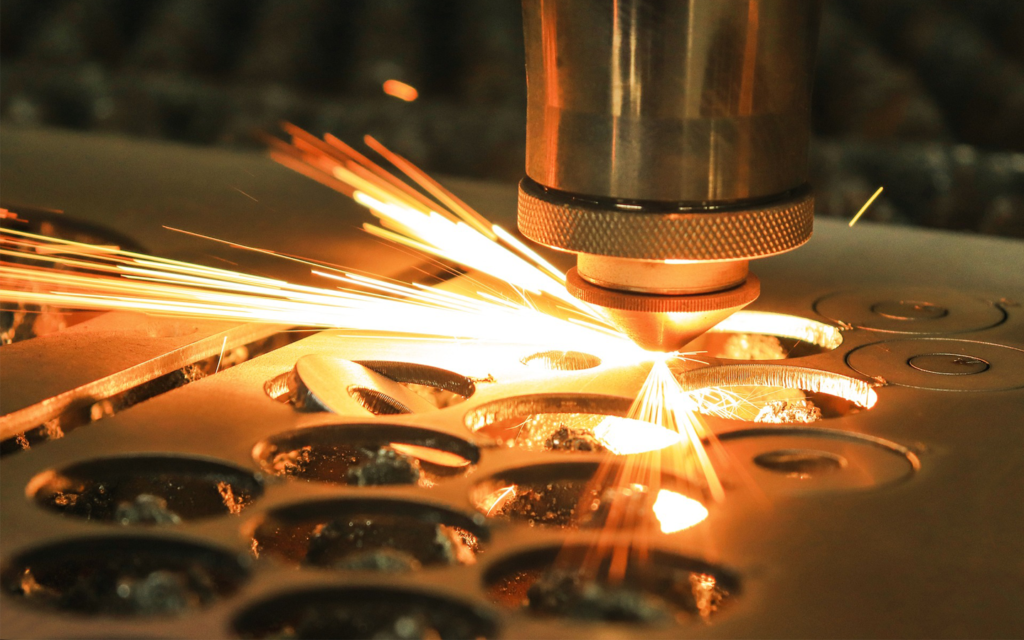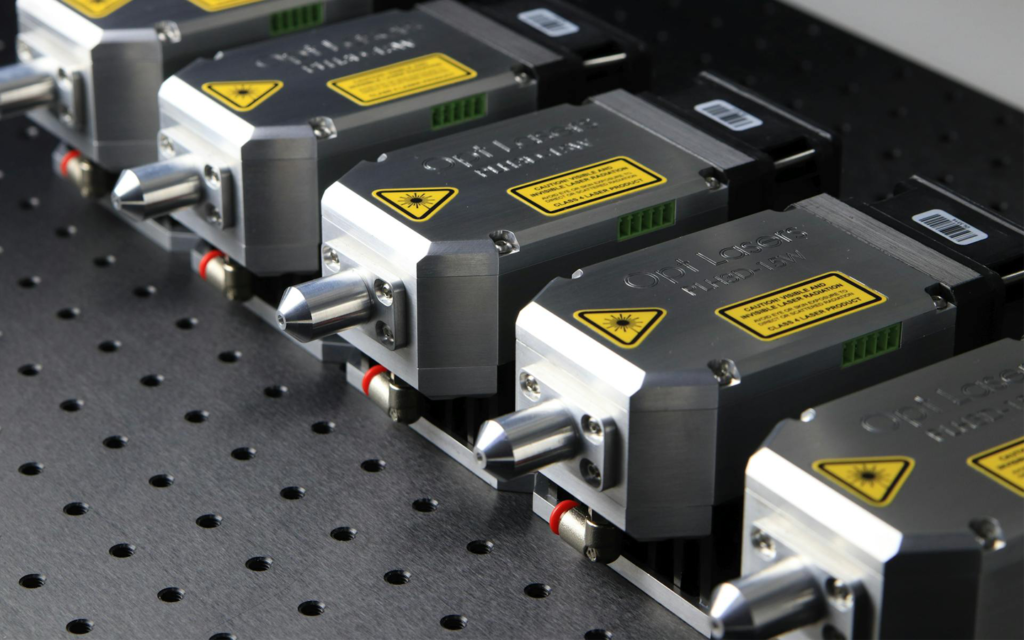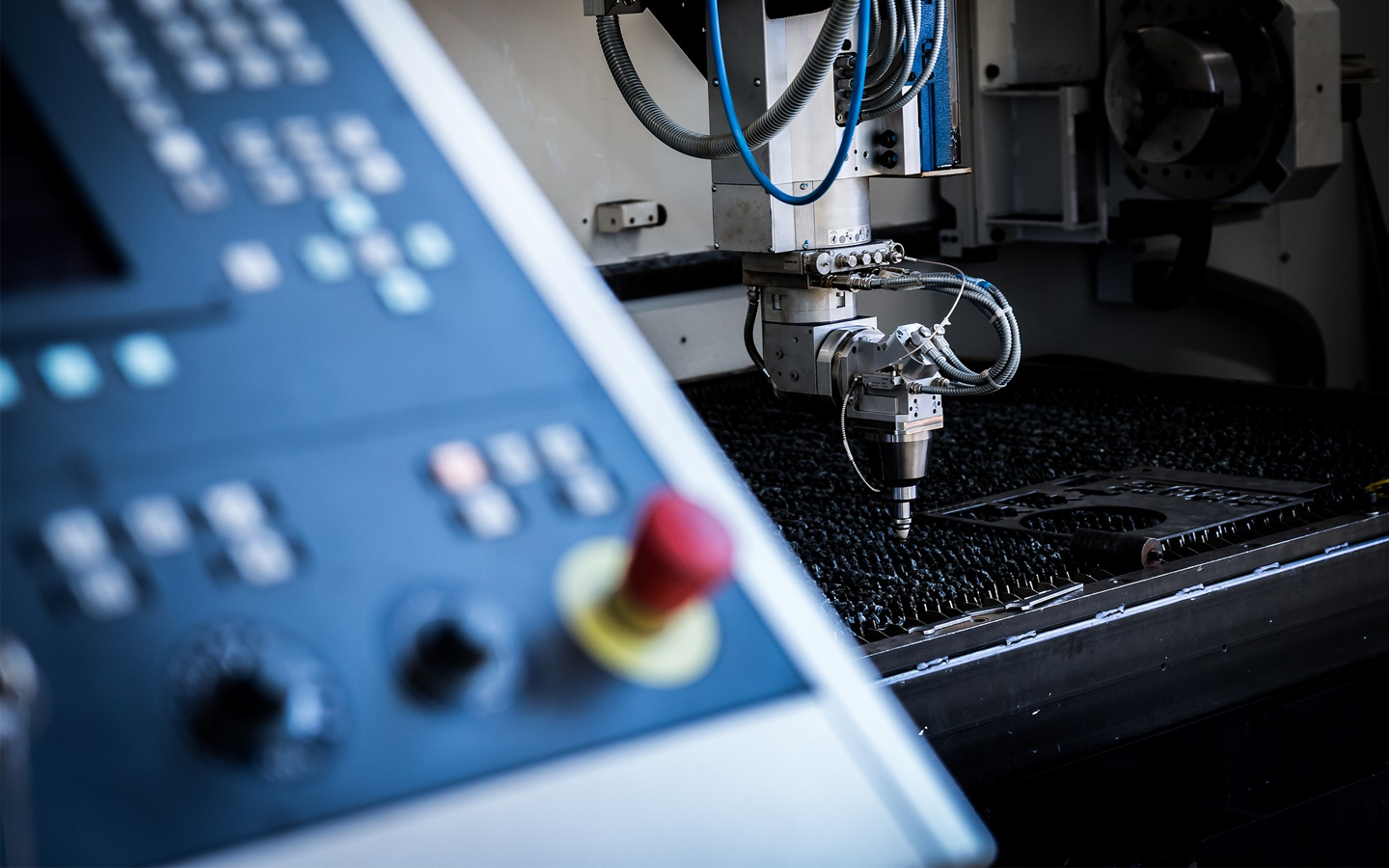What Is Laser Cutting? What does the laser cutting process involve?

Laser cutting is currently gaining popularity among companies operating in a wide variety of industrial sectors. It is an advanced technology that stands out for its extreme precision, fast speeds and versatility of applications. As a result, more and more companies are choosing to use this method in their production processes.
So why is laser cutting worth considering? Because it is a process that not only ensures accuracy, but also allows higher efficiency and quality of workmanship. Laser cutting can process a wide variety of materials, from metals to plastics, making it a versatile solution for many industries.
What does laser cutting involve?
Laser cutting is nothing more than an advanced process of thermal separation of materials. During it, a laser beam strikes the surface of the material, heating it intensely. This subsequently leads to melting or complete vaporisation of the material at the laser site. In the crucial cutting stage, the laser beam in turn penetrates deep into the material at a single point. A precisely controlled laser control system allows the laser to move according to a defined geometry, resulting in the precise separation of the material at the planned locations. In certain situations, process gases are additionally used to assist the entire cutting process.
One of the limitations of laser cutting can be its cost, which tends to be higher, especially when compared to traditional cutting methods. However, thanks to its extremely high precision and efficiency, laser cutting is becoming increasingly popular. Many entrepreneurs choose, for example, laser cutting of stainless steel for its accuracy and speed. It is worth mentioning that stainless steel is only one of many materials that can be effectively cut using laser technology.
Specifics of laser cutting

To carry out laser cutting, it is, of course, necessary to use a specialised device that emits a concentrated, polarised beam of electromagnetic radiation, which may include visible light, infrared or ultraviolet. The aforementioned beam is extremely concentrated and contains a large amount of energy, allowing precise cutting in a very small, well-defined area. However, it is worth bearing in mind that the laser beam alone is not sufficient to carry out the process – it is also necessary to use a technical gas such as nitrogen, argon or oxygen to aid cutting.
Laser cutting can be carried out by methods such as burning, sublimation or melting the material. The choice of the appropriate technique depends primarily on the properties of the material in question, in order to achieve the desired results.
What are the main advantages of laser cutting?
As we mentioned a little above, laser cutting is distinguished above all by its exceptional precision. This makes it the ideal technique for applications where every millimetre, or even fraction thereof, matters.
It is also worth noting that laser cutting eliminates the need for additional post-processing. This is because the method does not generate chips and does not cause damage to the workpiece. The effect of the cutting is only to divide the workpiece according to a pre-determined plan. For example, laser cutting of steel or aluminium is carried out without any undesirable side effects.
Another advantage is the ability to maintain consistent work quality. We do not have to fear that the contractor will not ensure the repeatability of all parts. Every cut part will be identical, which is crucial in many industrial applications. One of the biggest advantages of laser cutting is undoubtedly the ability to work with a wide variety of materials. This technology allows for:
- Laser cutting of sheet metal
- Laser cutting of aluminium
- Laser cutting of steel
- Laser cutting of stainless steel
These are, of course, only some of the possibilities offered by laser cutting. This technique works well not only for processing metals, but also for other materials such as fabrics. Thanks to its versatility and precision, such a process is now becoming increasingly popular in many industries.



